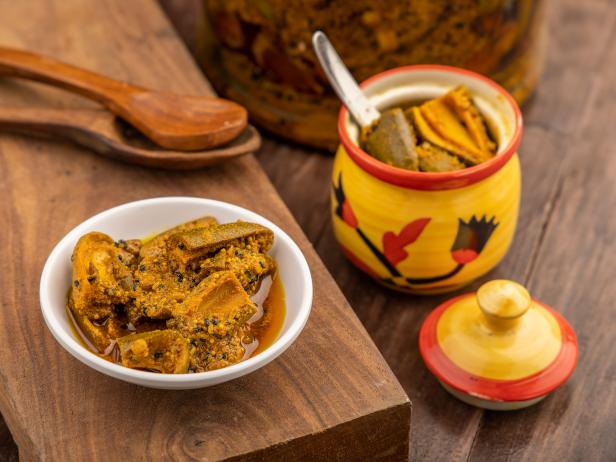For a Sweet, Spicy and Sour Punch of Flavor, Just Add Achar
Earthy spices and a days-long fermentation process give this popular pickled Indian condiment its tangy bite. Here are some ways to use it.


prabhjits/Getty Images
Just as ketchup, ranch dressing and hot sauce amp up dishes like fries, wings and tacos, achar, known as Indian pickle, adds a punch of potent flavor to Indian cuisine — and truly, any food at all.
The chunky condiment is prepared by fermenting fruits and vegetables in an oil and vinegar brine, allowing them to fully incorporate over a period of time. There are countless regional variations, with flavor profiles ranging from tart and sweet to peppery and sour. Like mint chutney or a dollop of spiced yogurt, a heaping spoonful can instantly elevate a simple plate of basmati rice or a potato-stuffed paratha, with just a small bit offering plenty of tang in each bite. Alternatively, achar can be incorporated into stews, curries and meats for an added complexity of flavor, in the same way that kimchi does with Korean dishes.
In India, the pickling process is a time-honored technique that dates back 4,000 years; it served as a method of preserving food for long periods of time. Beyond being practical, pickling fruits and vegetables would result in a sweet and salty heat that paired harmoniously with much of India’s spicy cuisine. With the abundance of mango trees found throughout the country, aam ka achar, which translates to mango pickle, is among the most common varieties of achar. It's worth noting though, that the pickling process works well for a multitude of fruits and vegetables, including gooseberry, lemon, lime, lotus root, green chili and a bounty of others.
Traditionally, pickling is done during the summer months – considered the pre-monsoon season in India – when the sun’s rays beat down the hottest. A mixture of fruits and vegetables with salt and spices like fenugreek seed, turmeric and cumin are combined with mustard oil or sesame oil and left to mature in the sun for up to a week. The finished product is an aromatic concoction with earthy flavors that have had a chance to wholly develop.
Today, achar is becoming increasingly common outside of India. In addition to gracing tabletops and condiment bars in Indian restaurants, jarred achars from global brands like Shan Foods can be found in big chain grocery stores like Kroger and H-E-B, plus online marketplaces like Amazon and Instacart.
Even more varieties are becoming available as people look for convenient, time-saving alternatives to cooking Indian food from scratch. Brooklyn Delhi, a Brooklyn-based brand devoted to producing premium Indian pantry staples, is available at Whole Foods and for sale nationally online. Along with a number of simmer sauces and chutneys, the brand’s line includes achaar in flavors like tomato and roasted garlic. Brooklyn Delhi's products remain true to traditional Indian flavors, but the company also manages to seamlessly showcase ways to incorporate achar into other cuisines. Recipes highlighted on the Brooklyn Delhi website include spicing up an egg and cheese bagel with a lathering of achar or incorporating it into scallion oil noodles for layers of savory flavor.
Purchasing a pre-packaged jar of achar is a tempting no-fuss option, but there’s something to be said about concocting a batch at home, based on your own personal preference. A general rule of thumb is to consider the quality of ingredients when preparing your achar. In the case of aam ka achar, it is important to use raw mangoes at the peak of their season, and ferment them with high-quality spices and oil. With little to mask the pure flavor of the ingredients, the thought and care put into their quality goes a long way.
Whether you decide to source achar or take a crack at making your own, be prepared to make room on the condiment shelf – it is sure to become a staple.
Related Content:





























